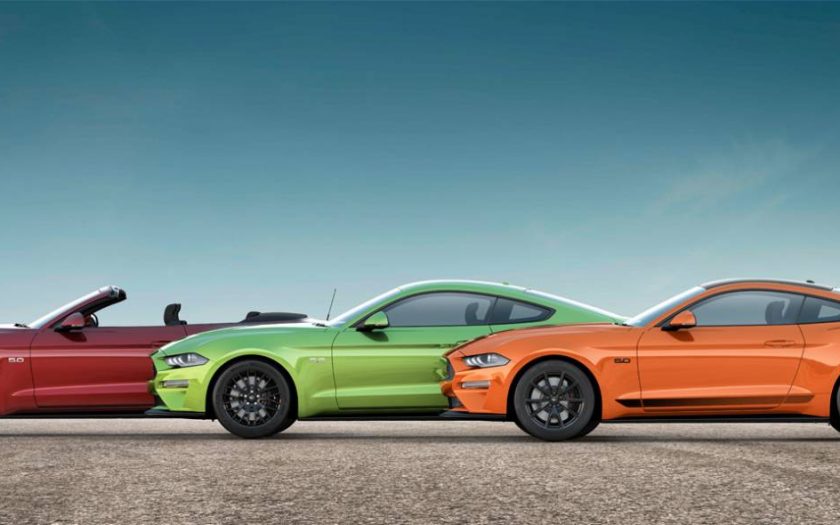Paul Murrell tests the 2019 Ford Mustang V8 Fastback with pricing, specs, ride and handling, safety, verdict and everything the over-50 driver needs to know.
Summary: Three years after first arriving in Australia, the Ford Mustang still turns heads. Some much-needed improvements have made it even more desirable.
2019 Ford Mustang V8 Fastback
Pricing: From $63,290 (plus ORC) (there’s nothing else that comes close)
Warranty: Five-years, unlimited km
Safety: 3-star ANCAP (one star better, but still not good enough)
Engine: 5.0-litre V8
Power: 339kW at 7000rpm (that’s up by 33kW)
Torque: 556Nm at 4600rpm (and up by 26Nm)
Transmission: Six-speed manual, optional ten-speed automatic (add $3000)
Drive: rear-wheel drive
Body: 4788mm (long); 2080mm (wide); 1379mm (high)
Cargo area: 408 litres
Weight: 1697kg
Towing capacity: not stated
Tyres: 255/40R19 (front), 275/40R19 (rear)
Spare wheel: none
Turning circle: 12.26m
Fuel tank: 59 litres
Thirst: 13.0L/100km (combined, 91 octane unleaded)
seniordriver consumption: 9.6L/100km over 557km
[review]
WHEN WE FIRST REVIEWED the Ford Mustang in 2016, we were less than complimentary about the quality of the finish and materials. Panel gaps that varied in width, patchy paint quality, a two-star ANCAP safety rating and pretty ordinary trim materials weren’t what we expected of a $60,000 car, whatever its country of origin.
What we couldn’t criticise, however, was the value for money. By any standards, the Ford Mustang delivered plenty of bang for your buck.
Ford Australia has just given the Mustang a make-over, and made it a better car all ‘round, with better quality materials, more power and torque, more standard equipment and a much better sound track.
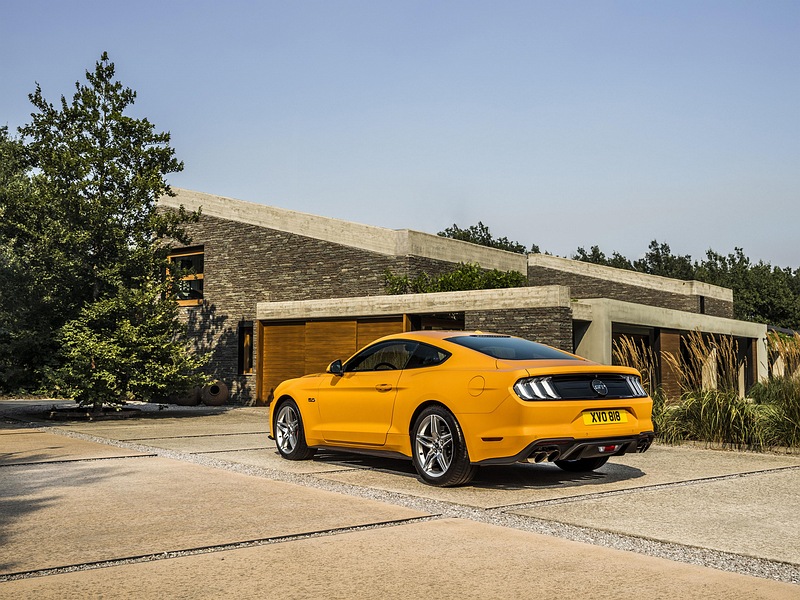
Let’s start with the noise.
The Mustang launched in Australia in 2016 quickly created a rash of after-market specialists who could personalise your new Mustang and, most importantly, upgrade the exhaust system to deliver the kind of noise buyers wanted from a muscle car.
The new Mustang gets a much more appealing engine note straight off the showroom floor. Start it up and it snarls with a blip of the revs before settling down to just the kind of throbbing grumble you expect from a five-litre V8 performance engine. When you push harder on the throttle, the engine sends out a deep, hairy-chested soundtrack that warns others to get out of your way, long before you even reach them.
It’s a direct consequence of the new quad-tipped active exhaust. Good news for the neighbours is that it can be slipped into quiet mode for late night homecomings and early morning departures. You can even program it to be in certain modes at specific times of the day.
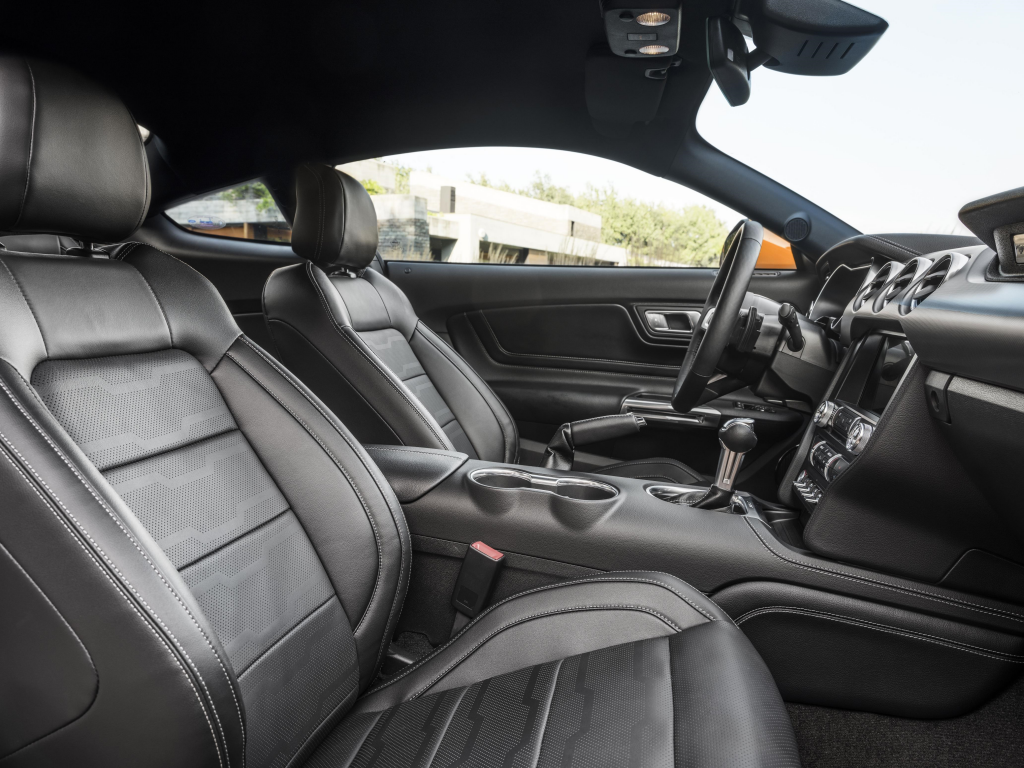
Equipped the way it should always have been.
The first Mustang was something of a grab bag of gimmicks, but the new one has become a little more sophisticated.
Up front there’s a neat redesign including LED headlights. New-design 19-inch alloy wheels fill the wheel arches. Inside, where there used to be plenty to object to, it feels altogether more upmarket, with soft-touch materials on the centre console, much better trim throughout and a much tidier 12-inch fully digital instrument cluster (that silly “Ground Speed” notation on the old model has been relegated to history as well). The instrument cluster can be configured four different ways and, according to Ford, was inspired by the dashboard in the Ford GT – whatever inspired it, we much prefer it, although the strip tachometer won’t appeal to everyone.
One of the let-downs with the previous model was the unpainted underside of the bonnet that could be seen (actually, couldn’t be missed) from the driver’s seat. The new bonnet sits flush, doesn’t reveal any unpainted surfaces and, unlike the car we tested in 2017, doesn’t wobble around as if one or more of the catches were undone. The upgrade has given it some additional air vents, too.
Some hangovers from the conversion from left-hand drive to right-hand drive remain, including the handbrake sitting on the far side of the centre console (and forcing you to contort your way around any bottles sitting in the central cupholders), but the indicator wand is on the right-hand side of the steering column, something that many others can’t seem to manage.
And in another throwback, the front 12-volt power outlet is actually a cigarette (or cigar) lighter … as they once were in all cars.
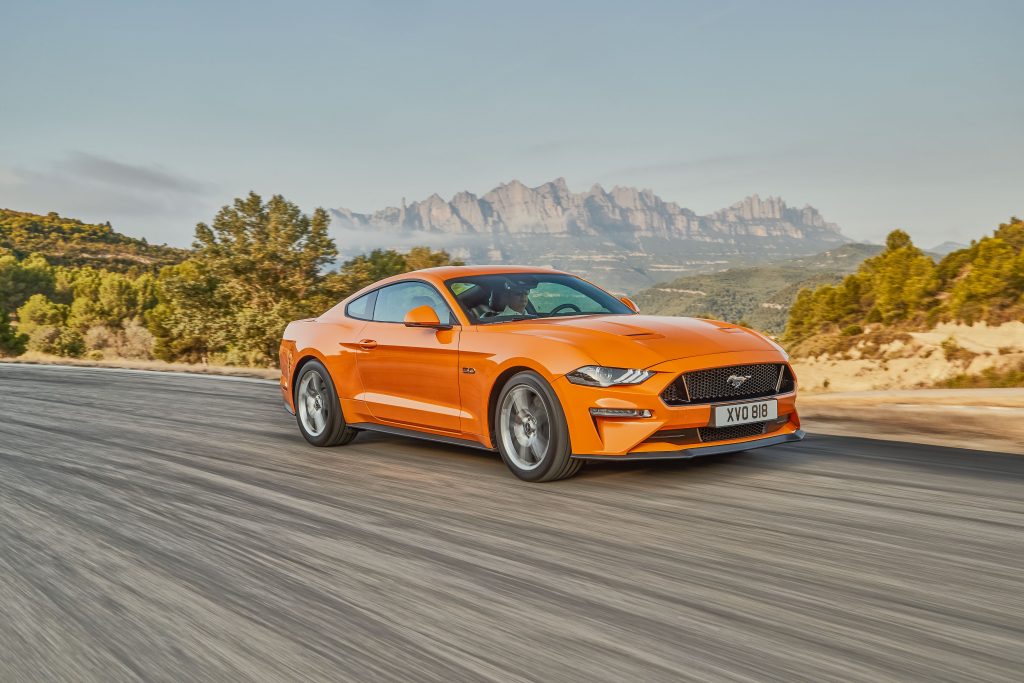
Practicality isn’t a high priority.
It’s easy to forget just how inconvenient a two-door coupe can be but having to tip the seats forward every time you want to access the back seat quickly reminds you.
While there are four seats, the rears are really tight and difficult to access. Combine that with limited rear headroom and almost no leg room and you’ll probably treat the rear seats as nothing more than additional luggage space.
On the plus side, the boot is surprisingly spacious at 408 litres, although the opening is an odd shape to accommodate the tail lights.
The car we drove was fitted with Recaro front seats (a $3000 option) which provide plenty of support in all the right places, but we suspect they make back seat access even more problematic.
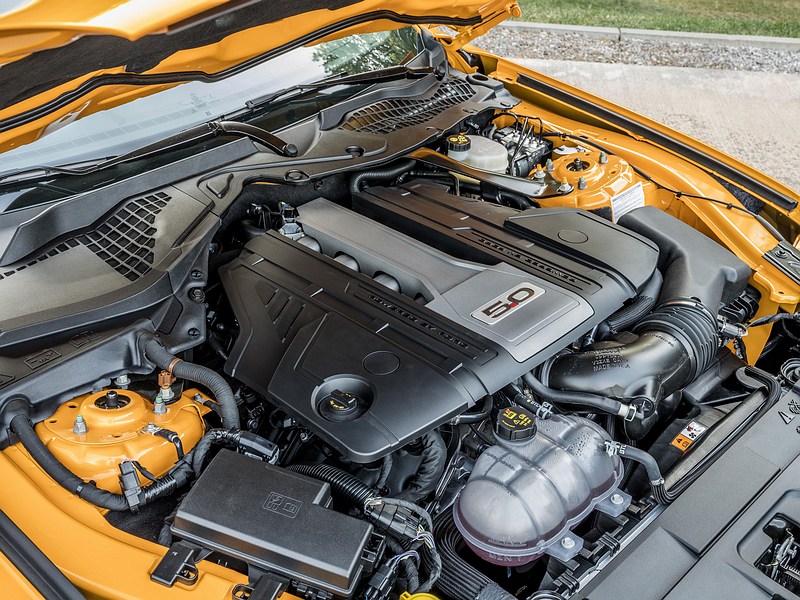
Old-school driving.
There’s something almost old-school about driving the Mustang. And it’s none the worse for that.
There’s an abundance of pick-up from the big V8 at almost any speed, and it always sounds spectacular. But it’s more muscle car than sports car, and you’re always aware of its size and weight.
Steering has been sharpened but despite a multi-link suspension, the car doesn’t handle quite the way you wish it would. Hit a bump mid-corner (and isn’t that always where they are?) and the tail skips sideways. We weren’t brave enough to disable the safety systems and resisted the temptation to put the car in racetrack mode (which gives you a warning that it’s not for use on public roads). There are other odd modes as well, including drag strip (which combines launch control with softened dampers so the car can squat and grip better) and another setting for ice and snow. Normal mode will suit most people, and just for fun, you’ll occasionally flick it into Sport+ mode. The optional MagnaRide suspension uses magnetic fluid in the dampers to stiffen up the settings in Sport+ and Track modes, but these are a little too unforgiving for everyday use, being noticeably more assertive and even, on occasion, quite aggressive.
The five-litre V8 has been boosted (although it is still comparatively low-tech) to 339kW and 556Nm (up 33kW and 26Nm) through the adoption of direct fuel injection and revised compression ratio. At low engine speeds, it just lopes along and then when you ask it to perform, it gets right into the spirit of things.
We didn’t test the six-speed manual model, but if it follows past patterns, it will come with a heavy clutch and quite long throws (Americans aren’t big fans of manual gearboxes). We suspect it would be quite a handful around town, but the ten-speed auto makes the driving experience easy to handle and flicking down through the ratios enhances the driving experience.
Fuel consumption puts the Mustang up near the top of the list of gas guzzlers, with a claimed 13.0L/100km (12.7 for the auto). When we collected the car, the distance to empty read out (with a full tank) showed just 270km, but a little gentle driving (before we decided to test it more in the spirit of things) increased the range to much higher distances, although the D-to-E figure kept changing alarmingly, rising and falling as if it had a will of its own. Over a varied (but with quite a percentage of country driving) week, we achieved a much more acceptable 9.6L/100km.
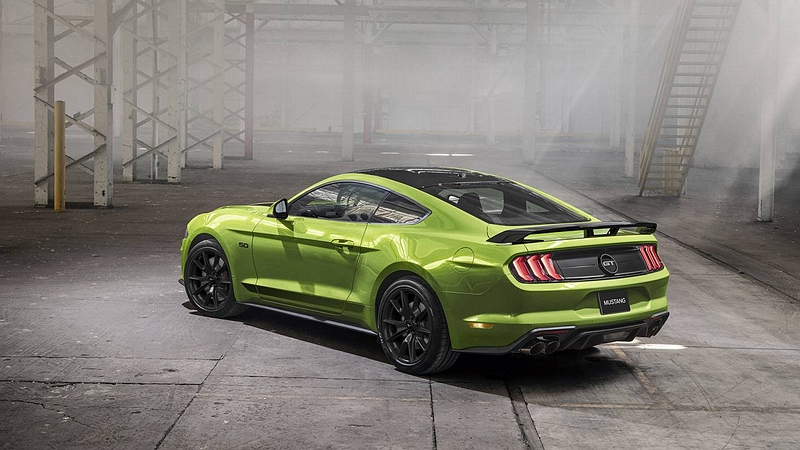
Flawed, but lovable.
One thing the Mustang gets almost unanimous approval for is its styling. It’s tough, brawny and sleek. From some angles, it has hints of Aston Martin, but you’d never mistake it for anything but a Mustang.
The absence of any sort of spare wheel is always a cause for concern. Pressure monitors will let you know if you have a slow leak and there’s a tyre inflation kit in the boot, but if you ever do have a flat tyre, it’s going to be very inconvenient.
If you want the wind-in-the-hair experience, you can order your Mustang as a convertible for a $12,000 premium (convertibles are auto-only). Big stripes are an important Mustang feature and you can choose from a range of different styles at extra cost, plus a rear-spoiler, Recaro leather seats and prepare to pay about $300 for “prestige paint”.
Another Ford initiative is its MyKey system that gives owners to option of programming the car to limit top speed, limit stereo volume, block phone calls and text messages while driving and even increase the frequency of the seat belt reminder. If you’ll be lending your car to others, especially younger drivers, this is a feature that will go a long way towards giving you peace of mind.
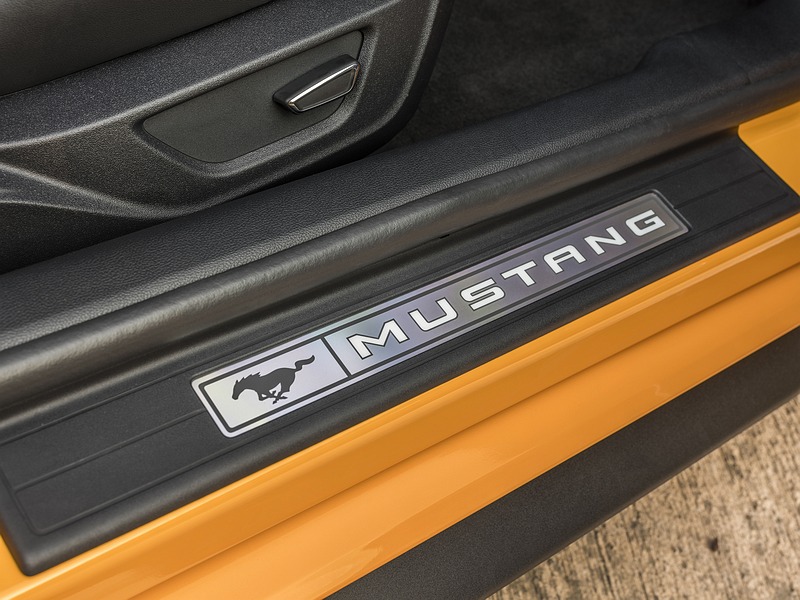
An extra safety star.
The previous model Mustang came in for plenty of criticism for its poor safety rating of just two ANCAP stars. At the time, we suggested it would have little impact on sales, and so it has proved. The new model has upped the rating to three stars, still less than praiseworthy but better. Much of the problem came from poor passenger protection in the rear seats (another reason to stay out of the rear!) Crash testing revealed head, chest and leg injuries were likely from a 50km/h frontal impact, due to the seatbelts not being able to restrain the rear passengers safely and poor whiplash protection.
Helping the improved safety rating are adaptive cruise control, autonomous emergency braking, lane departure warning and lane keeping assist. There’s also a reversing camera, auto wipers and light-sensing, auto-levelling headlights. Ford’s emergency assistance feature is also fitted, making it possible for the car to automatically contact emergency services if it’s involved in an incident serious enough to deploy the airbags (of which there are eight, including for the driver’s and passenger’s knees).

Summary.
Quite simply, the Mustang has the market almost to itself (unless you want to spend a lot more money). About the only comparable car is the Chrysler 300 SRT, but it has four doors and nowhere near the street cred of the Mustang. It’s a bit of a blunt instrument, but enormous fun and despite a small price rise, still incredible value for money.
